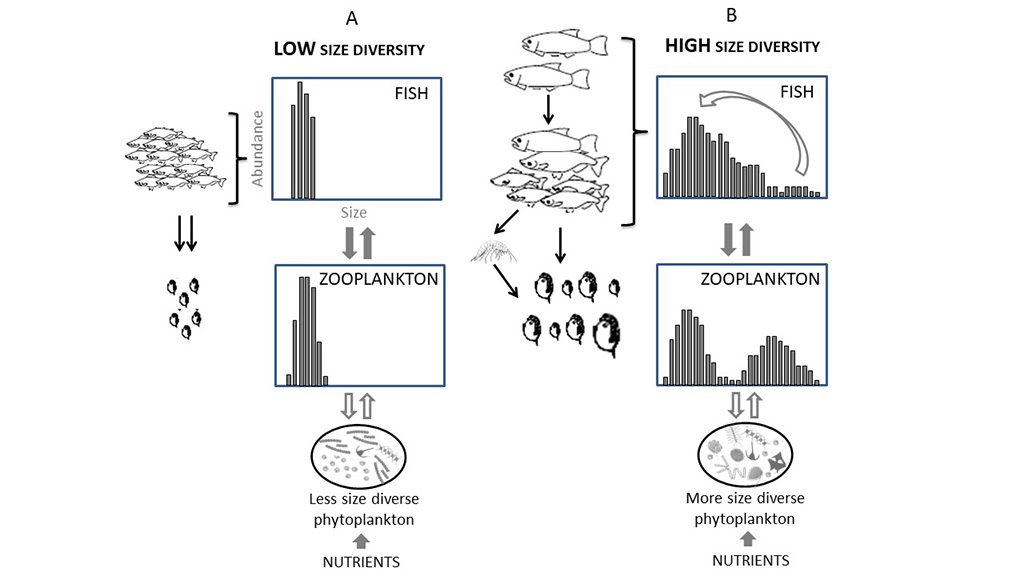Freshwater ecosystems have particularly high biodiversity and provide ecosystem services essential to human well-being. However, the biodiversity of these habitats is declining at an alarming and unprecedented rate due to human activities. One of the major consequences of biodiversity decline is the loss of ecological functions and ecosystem services. For this reason, major efforts are invested at quantifying the relationship between biodiversity and ecosystem functions. Nevertheless, the estimation of biodiversity is often complex and time-consuming.
An alternative to the taxonomical approach to assessing biodiversity and ecosystem processes is to study the body size structure (i.e. relationship between organisms’ body size and their density) of the community. Body size is a fundamental attribute of organisms because many physiological rates are size-dependent. Body size also determines ecological structures and processes such as population abundance, predator–prey interactions and the resilience of the food webs.
The research on size structure of aquatic communities at ICREA has recently been quite productive. Based on a large database of fish communities in European lakes, we have shown that competition and predation are key drivers of the size structure. We also provided evidence that higher size diversity of prey may drive a higher size diversity of predators, or vice versa. Size structure of aquatic communities also respond systematically to environmental disturbance, such as changes in land use in subtropical streams or shifts in temperature and resource availability in Mediterranean lakes. Thus, metrics based on size structure could be used as comprehensive indicators of ecosystem health, together with traditional taxonomic approaches. Finally, by performing an experiment in lake Mývatn (Iceland), we demonstrated that changes in size structure across the aquatic food web are related to shifts in the efficiency of energy transfer. Thus, our studies underpin the importance of taking into account organisms’ size when assessing ecosystem processes and human impacts.
References
